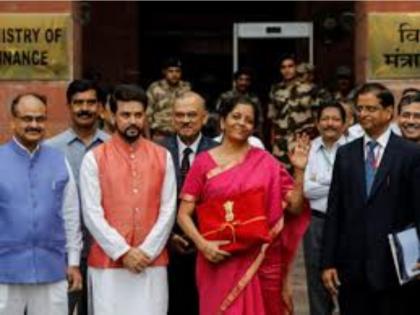Budget 2020: 5 things to expect
By Lokmat English Desk | Published: February 1, 2020 09:19 AM2020-02-01T09:19:10+5:302020-02-01T09:33:26+5:30
Finance Minister Nirmala Sitharaman has an unenviable task ahead as she rises to present the Union Budget for the ...

Budget 2020: 5 things to expect
Finance Minister Nirmala Sitharaman has an unenviable task ahead as she rises to present the Union Budget for the financial year 2020-21 (FY21). That’s because the Indian economy has been decelerating fast — just on Friday, the government cut the GDP growth rate for 2018-19 from 6.8% to 6.1%. The growth rate in the current year is already expected to be at a six-year low.
Credibility of the Fiscal math
The first and foremost challenge for Sitharaman will be to convince the investors and analysts that her revenue and expenditure projections are credible. Last year’s Panglossian revenue growth projections which proved unachievable were challenged by analysts from the very beginning. The fiscal deficit number, which hides as much as reveals, will also be closely watched for both FY20 and FY21. The nominal GDP growth projection for FY21 also needs to be realistic.
Fiscal Stimulus
The government is widely expected to announce measures to pump prime the economy in the absence of pick up in private investment and weakening consumer demand. The nature and extent of the demand push will be keenly watched. While a larger spending plan could show government’s seriousness about the economic downturn and its resolve to turn it around, it could also worry the bond market and prevent the RBI from further rate cuts.
Finance Commission recommendations
The finance minister Sitharaman will also present the recommendations of the interim report of the 15th Finance Commission as well as the action taken report in the Parliament on Saturday. States and economists will be looking at how the FFC has dealt with contentious issues such as share of states in the divisible pool of central taxes, the weightage of population in resource allocation as well as the proposal to create a separate fund for defence sector.
Widening the tax base
To raise resources for higher public spending amid a slowdown in tax collections, Sitharaman has to widen the tax base and plug the abuse of some of the tax incentives such as those given to charitable trusts. To widen the tax base, Sitharaman could follow the European trend of stepping up taxation on offshore digital economy companies which tap the local consumers, but it could be perceived as an attack on US-based technology giants.
Income tax relief
There is pressure on the government to offer a tax relief to the middle class but considering that the contribution of this segment to the exchequer is significant, any relief could pinch the government. The salaried class accounts for close to 60% of gross total income reported by all individuals including people who have income from business, capital gains, house property and other sources. It is the stated policy of the government to cut tax rate and withdraw tax exemptions. If this is tried in the case of individuals, there is the worry that it could endanger household savings rate, the moderating trend of which has been a matter of worry for economists.